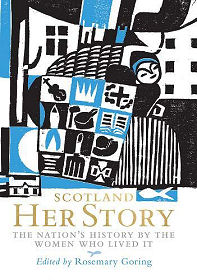 |
History? It's easy to grow up believing that history is somehow objective; that there is a single factual account of things that took place. It doesn't take all that long to realise that it isn't; and there isn't. It was Voltaire who said "History is the lie commonly agreed upon." History is subjective, impressionistic. You only need look at the modern era of "spin" and "fake news" to realise that "facts" are themselves all too often malleable and shifting and subjective. This matters, because, as the Spanish/American philosopher George Santayana said: "Those who cannot remember the past are condemned to repeat it."
What would this mean for a society in which only one part of the population ever wrote or featured in that society's history? Let's imagine a world in which a particular group, who tended to share many similar characteristics, were the only ones who ever recorded what took place in that society; and the rest of society, who tended to share a rather different set of characteristics, was excluded from the process. We don't need to imagine such a world: we live in it. It's perhaps no coincidence that both the quotes featured in the preceding paragraph were made by men. Throughout much of human history around half of the population - women - have, with a few exceptions, been largely invisible as individuals. It is only in comparatively recent times that women have begun to step out from behind the veil of history to feature in their own right; and as the trolling of women with high profiles on social media demonstrates, the process still has a very long way to go before it reaches anything approaching equity or universal acceptance.
I should start by declaring an interest as a male reviewer. From my perspective, "Scotland: Her Story: The Nation's History by the Women Who Lived It" by Rosemary Goring is a hugely important and remarkably eye-opening book. The author describes the book in her introduction as: "an attempt to put women back into the picture, and to add depth and colour to the often monochrome portrait of the past. To this end I have worked like a metal detectorist, reading my way across acres of recorded history, hoping for a dancing needle or high-pitched tone that would alert me to something worth digging out."
The result is some 200 snippets of varying lengths, from a paragraph to several pages. The book opens with the final letter written by Mary, Queen of Scots on 8 February 1587, but is otherwise organised chronologically, starting with pieces by The Venerable Bede before 683 and Matthew Parris in 870 about St Aebbe or Ebba of Coldingham, and concluding with an interview of First Minister Nicola Surgeon by journalist Mandy Rhodes. On the journey between them, it takes in a truly amazing range of material, albeit with themes that recur of the treatment - too often the mistreatment - of women by men; and the sense that for too long when women did feature in history it was often as scapegoats, whether when accused of witchcraft or as the imagined cause of society's various ills.
In some ways the picture that emerges from the content of the book illustrates an unbalance that is even worse than the one that it seeks to present in summarising itself. The front flap of the dust jacket notes that "Scotland's history has been told many times, but never exclusively by its women." The book is far from exclusively written by women. The author sets out the constraints of the source material in her introduction, and it is entirely right that she has included many glimpses or snapshots of women and their world that were penned by men. Early in the book most of the material has male authors, and it is only when we come to the last two centuries that the balance begins to be redressed. One can only conclude that it is simply impossible for our nation's history to be told "exclusively by its women", and that what we have here is the very best balance it is possible to achieve within the material available from the sources that exist.
InformationHardcover: 320 pagesBirlinn Ltd birlinn.co.uk 15 October 2018 Language: English ISBN-10: 1780275315 ISBN-13: 978-1780275314 Size: 15.2 x 2.5 x 22.9 cm Buy from Amazon (paid link) Visit Bookshop Main Page |
